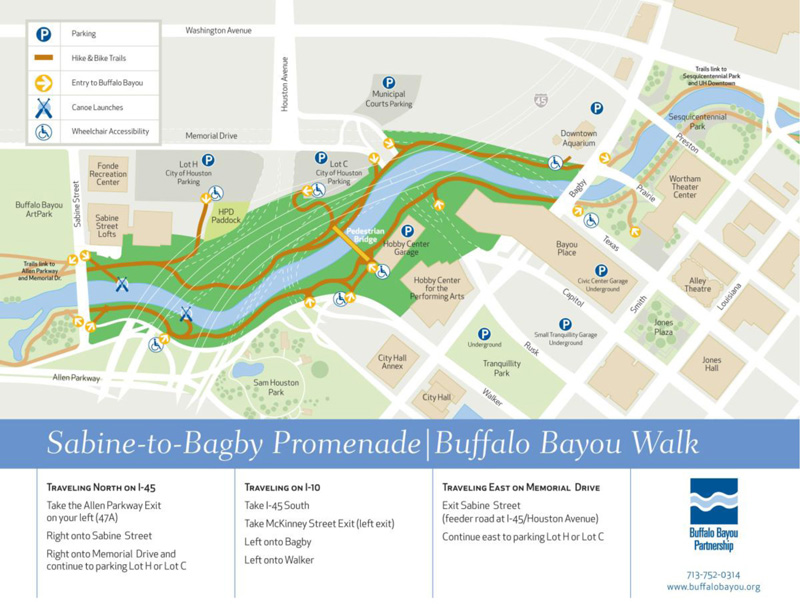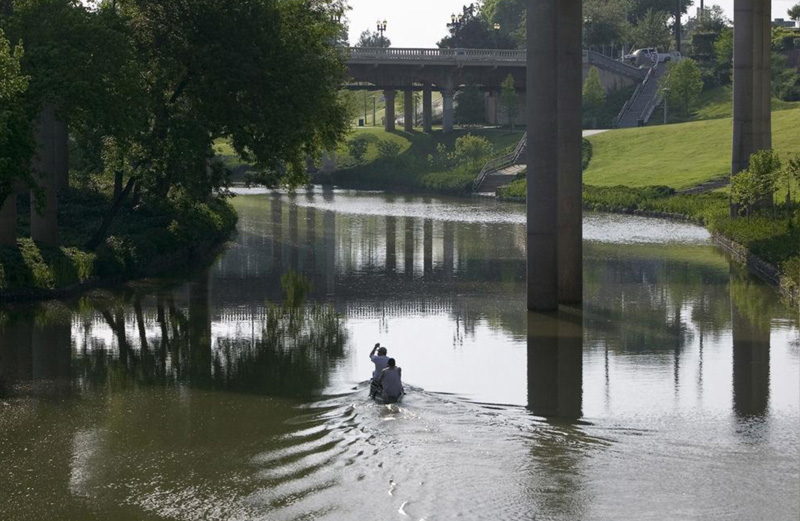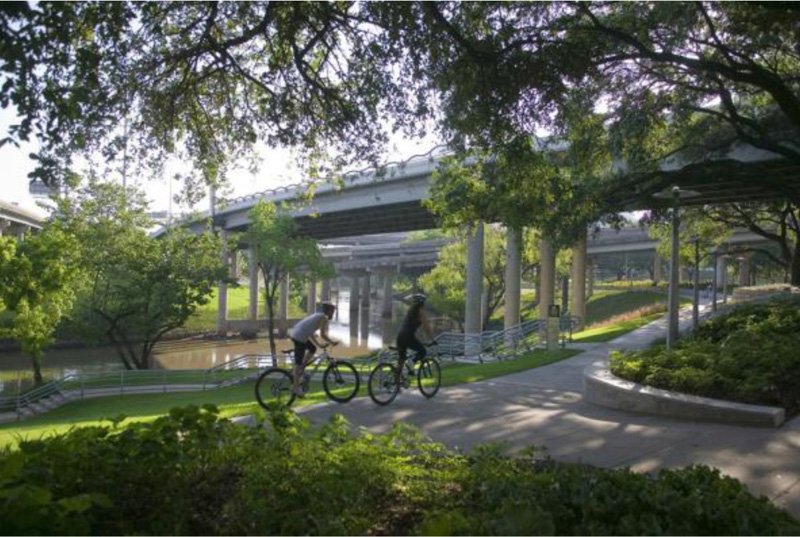Case Study Clemson 3
---> back to overview of Future Landscapes Group 3
add your case study title by add authors
Core Question 1: In how far does this project reveal your concept of future landscapes?
This project reveals the future of urban landscapes. The mixture of adaptive reuse of and urban jungle of concrete and highways.
This project combines both function and the over use of highways and concrete and creates a harmonious environment that would normally be chaotic.
Landscape and/or urban context
- Biogeography, cultural features, overall character, history and dynamics
This projects culture is found within the urban chaos of traveling along highways and the dense population of Houston. The design aims to create a park that provides biking and paths but in a more aesthetically appealing way combining park functions with the urban structure of concrete and roads. Creating something that was unusable into a treasure part of Houston. The project plays with connections and linking people.
Illustration: Map; sketches; short descriptive analyses
Cultural/social/political context
- Brief explanation of culture, political economy, legal framework
Illustration: Bullet points, image, background notes
Spatial analysis of area/project/plan
- What are the main structural features?
Buffalo Bayou Promenade – highways, stone gabions, Galvanized steel
- How has it been shaped? Were there any critical decisions?
This project has been shaped within the urban fabric of Houston. Using land that was seen as useless is now a thriving park.
The park has been interwoven with other parks nearby among the busy traffic of highways above.
Illustration: Map/diagram/sketches photos and background notes

Analysis of program/function
- What are the main functional characteristics?
Mainly a recreational park this project provides active recreation using bike trails, hiking, playgrounds, boat launch for
canoes, disc golf and a dog park. This project has many other features.
- How have they been expressed or incorporated?
They have been incorporated throughout the rivers edge. Creating an attractive waterfront exercise area while providing
plenty of public parking and entry points from all locations.
Illustration: Map/diagram/sketches photos and background notes
Analysis of design/planning process
- How was the area/project/plan formulated and implemented?
The area was formulated from the unused land. The city wanted to build a park that was sustainable while also using Corp
of Engineers HEC model for flood control. With native plants and flood resistant vegetation.
Goals: protect and enhance existing natural resources; increase natural resources within the corridor; stabilize Bayou banks;
reduce maintenance costs; and, improve the aesthetic and recreational value of the Park.
- Were there any important consultations/collaborations?
Consult of Corp of Engineers
Illustration: Map/diagram/sketches photos and background notes

Analysis of use/users
- How is the area/project/plan used and by whom?
The area is used by active individuals who are looking for a place full of nature.
However, this park is ADA accessible and provides an environment for all ages and citizens.
The area hosts festivals for large gathers especially Fourth of July.
- Is the use changing? Are there any issues?
Flooding Issues but they have been addressed with the design. Some current invasive species.
Illustration: Map/diagram/sketches photos and background notes
Core Question 2: What is the role of landscape architecture in this project?
The highline is a really a significant project that represents the landscape urbanism movement done by James Corner that is trying to achieve a mix both architecture and landscape architecture. It is culturally trying to give the people and visitors of New York an attractive, usable and practical green space and environmental project that restores brown field and unused and outdated infrastructure. It is an innovative use of adding green to a city which is an exemplary example of a future landscape because it supports the positive reclaiming of abandoned urban environments and succeeds in promoting a new habitable space that is overwhelmingly needed in many urban areas. The Highline is a new landscape typology, making it not purely architecture and not purely landscape which is critical in allowing for re-engineering of the old use in the urban framework of a city. The site is not only aesthetically powerful but it is ecologically sound, and is preserving the cultural history of the highline of NYC.
You may add 1-2 more core questions as discussed in your group
Image Gallery
- Yourimage.jpg
your image text
- Yourimage.jpg
your image text
- Yourimage.jpg
your image text
- Yourimage.jpg
your image text
- Yourimage.jpg
your image text
References
Please add literature, documentations and weblinks
About categories: You can add more categories with this tag: "", add your categories

